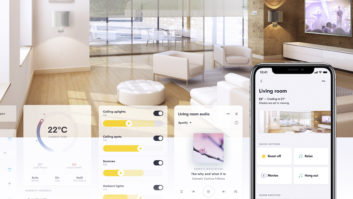
We all get calls from potential clients to take over projects. While you do need a set of criteria to use to evaluate whether you will take on the work (scope of new work to be done, age of equipment, etc.), that is not the focus of this blog. I want to talk about how you handle a takeover, both as the new home tech pro (HTP) coming in and as the pro leaving the project.
We have found the switch in pros usually occurs for one of three reasons — the previous home tech pro went out of business, doesn’t service the product line anymore, or had a falling out with the client. The first two are pretty straight forward, but the third can be very tricky.
For the first scenario, where the HTP went out of business, the takeover really hinges on whether or not you can get in touch with them. Our experience has been that if you can get in touch, they are usually more than willing to help with the transition by sharing programming, passwords, wiring diagrams, and so on. If they are not reachable, I have found that manufacturers are more willing to help. For example, SnapAV policy is not to transfer OvrC product to another dealer without the original dealer calling in to make it happen (stupid policy in my opinion, but that is not the point of today), but if the original dealer is no longer in business, they will initiate the transfer. If you are on the other side of this and are going out of business (be it moving, retiring, or changing careers), I implore you to have a way for former clients to contact you through an out-of-office message or on your website so the takeover dealer is not left flailing to figure things out.
Similarly, if the pro no longer services the product line (most common with control systems), they are usually very willing to help out. And if they are not being cooperative, typically the manufacturer will step in to help out as much as they can, going so far as to send in field technical support to assist in the transition. Again, if you are on the other side and gave up a product line, don’t punish the new dealer — please make files and information accessible to them.
Also by Todd Anthony Puma: Sale or Schadenfreude?
The most complicated is the last scenario — a falling out between pro and client. I have seen it happen both ways — the client fires the pro or the pro fires the client. This is where you need to dig deeper. Sometimes it is a matter of personality conflict or miscommunication, and maybe a fresh start is all that is needed to get the client happy again. Other times they may be a truly difficult client or the original pro was just not that good or did not do their best work on the project. No matter the situation, it is critical to remember the two key rules to follow:
- NEVER bad mouth the other pro. They may do things differently than you and have different processes and procedures, but do not tear them down. You wouldn’t want it done to you, so don’t do it to them.
- Contact the old pro. Reach out and have a frank discussion with them. I’m sure the client gave you an earful, but you need to hear both sides of the story. You also want to build the rapport with the old pro in case you do take over the job and need files and information from them to make it go smoothly. Do not put any of your thoughts about the pro or the client in writing. Have this discussion over the phone.
Sometimes after talking to both parties, you may come to realize that your company would not be a good fit either. It is best to figure this out quickly and, as Kenny Rogers says, “Know when to fold ‘em, know when to walk away, and know when to run.” In this case, you can politely decline the project and tell the client it is just not the right fit, or not a large enough project for your business model, or too far away, or any other number of excuses. If you know other dealers who may be a better fit, this is a good time to refer them. Also let those pros know that you have referred them and share with them what you have learned in a fair and balanced way.
Also by Todd Anthony Puma: The Nightmare Referral and How to Handle It
If you are the original pro on the project, while you may be mad at the client, hurt that you lost the project, or gloating because you fired them at the right time, you still need to keep the key rule in mind: Do not bad mouth the client. Be fair and balanced and let the prospective new dealer know what you learned and what you see as the pros and cons of the job. If the new pro does take over the work, do all you can to help with the transition. It is best to keep your dealings directly with the new pro and leave the client out of any communications, in case there are hard feelings or lingering resentments.
Be professional and it will come back to you in spades when you are the new pro taking over.
Want more stories like this delivered to your inbox every day? Then sign up for the free Residential Systems eNewsletter here.







